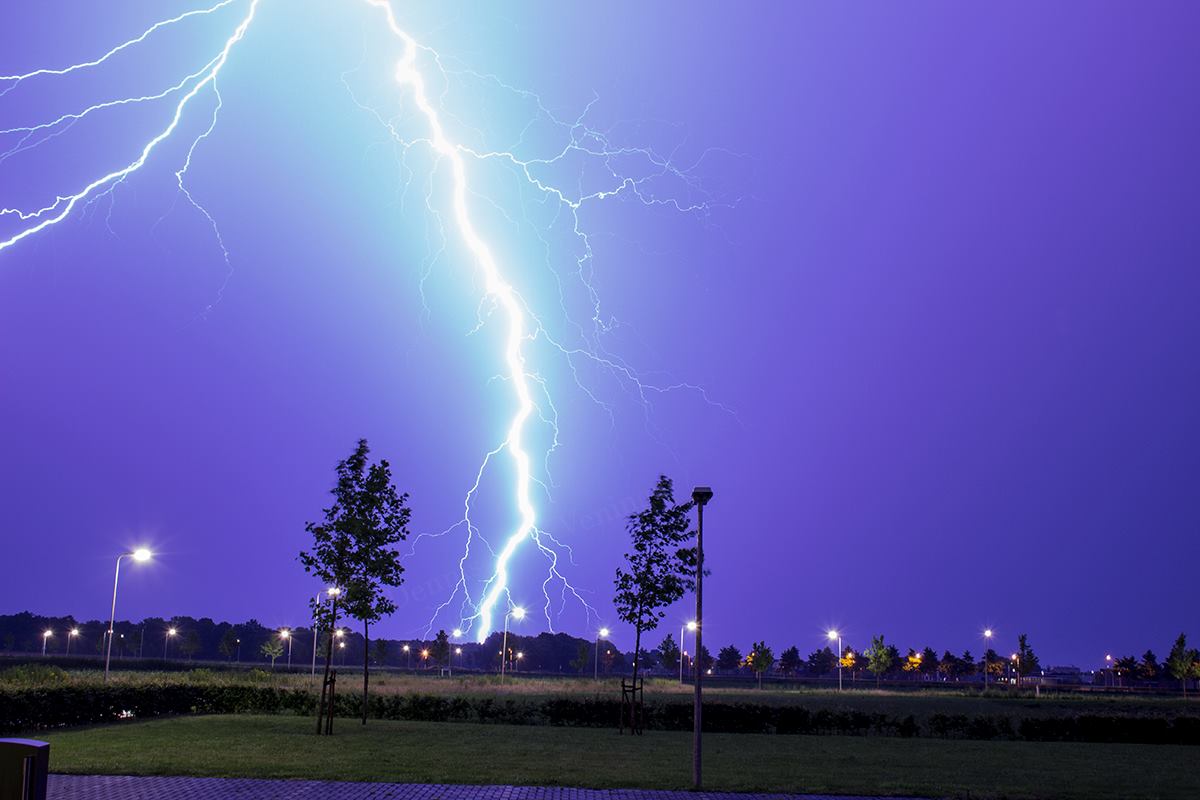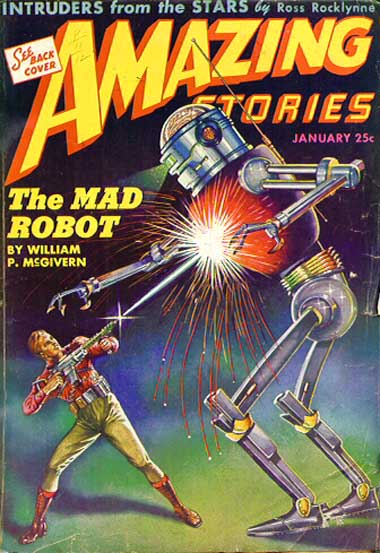|
Plasma Arc
A plasma torch (also known as a plasma arc, plasma gun, plasma cutter, or plasmatron) is a device for generating a directed flow of plasma. The plasma jet can be used for applications including plasma cutting, plasma arc welding, plasma spraying, and plasma gasification for waste disposal. Types Thermal plasmas are generated in plasma torches by direct current (DC), alternating current (AC), radio-frequency (RF) and other discharges. DC torches are the most commonly used and researched, because when compared to AC: "there is less flicker generation and noise, a more stable operation, better control, a minimum of two electrodes, lower electrode consumption, slightly lower refractory eatwear and lower power consumption". Transferred vs. non-transferred There are two types of DC torches: non-transferred and transferred. In non-transferred DC torches, the electrodes are inside the body/housing of the torch itself (creating the arc there). Whereas in a transferred torch one elect ... [...More Info...] [...Related Items...] OR: [Wikipedia] [Google] [Baidu] |
Plasma Cutter
Plasma cutting is a process that cuts through electrically conductive materials by means of an accelerated jet of hot plasma. Typical materials cut with a plasma torch include steel, stainless steel, aluminum, brass and copper, although other conductive metals may be cut as well. Plasma cutting is often used in fabrication shops, automotive repair and restoration, industrial construction, and salvage and scrapping operations. Due to the high speed and precision cuts combined with low cost, plasma cutting sees widespread use from large-scale industrial CNC applications down to small hobbyist shops. The basic plasma cutting process involves creating an electrical channel of superheated, electrically ionized gas i.e. plasma from the plasma cutter itself, through the workpiece to be cut, thus forming a completed electric circuit back to the plasma cutter through a grounding clamp. This is accomplished by a compressed gas (oxygen, air, inert and others depending on material being cu ... [...More Info...] [...Related Items...] OR: [Wikipedia] [Google] [Baidu] |
Tungsten
Tungsten, or wolfram, is a chemical element with the symbol W and atomic number 74. Tungsten is a rare metal found naturally on Earth almost exclusively as compounds with other elements. It was identified as a new element in 1781 and first isolated as a metal in 1783. Its important ores include scheelite and wolframite, the latter lending the element its alternate name. The free element is remarkable for its robustness, especially the fact that it has the highest melting point of all known elements barring carbon (which sublimes at normal pressure), melting at . It also has the highest boiling point, at . Its density is , comparable with that of uranium and gold, and much higher (about 1.7 times) than that of lead. Polycrystalline tungsten is an intrinsically brittle and hard material (under standard conditions, when uncombined), making it difficult to work. However, pure single-crystalline tungsten is more ductile and can be cut with a hard-steel hacksaw. Tungsten occurs in many ... [...More Info...] [...Related Items...] OR: [Wikipedia] [Google] [Baidu] |
Plasma Physics
Plasma ()πλάσμα , Henry George Liddell, Robert Scott, ''A Greek English Lexicon'', on Perseus is one of the . It contains a significant portion of charged particles – s and/or s. The presence of these charged particles is what primarily sets plasma apart from the other fundamental states of matter. It is the most abundant form of |
Plasma Source
Plasma ()πλάσμα , Henry George Liddell, Robert Scott, ''A Greek English Lexicon'', on Perseus is one of the . It contains a significant portion of charged particles – s and/or s. The presence of these charged particles is what primarily sets plasma apart from the other fundamental states of matter. It is the most abundant form of |
List Of Plasma (physics) Applications Articles
This is a list of plasma physics topics. A * Ablation * Abradable coating * Abraham–Lorentz force * Absorption band * Accretion disk * Active galactic nucleus * Adiabatic invariant * ADITYA (tokamak) * Aeronomy * Afterglow plasma * Airglow * Air plasma, Corona treatment, Atmospheric-pressure plasma treatment * Ayaks, Novel "Magneto-plasmo-chemical engine" * Alcator C-Mod * Alfvén wave * Ambipolar diffusion * Aneutronic fusion * Anisothermal plasma * Anisotropy * Antiproton Decelerator * Appleton-Hartree equation * Arcing horns * Arc lamp * Arc suppression * ASDEX Upgrade, Axially Symmetric Divertor EXperiment * Astron (fusion reactor) * Astronomy * Astrophysical plasma * Astrophysical X-ray source * Atmospheric dynamo * Atmospheric escape * Atmospheric pressure discharge * Atmospheric-pressure plasma * Atom * Atomic emission spectroscopy * Atomic physics * Atomic-terrace low-angle shadowing * Auger electron spectroscopy * Aurora (astronomy) B * Babcock ... [...More Info...] [...Related Items...] OR: [Wikipedia] [Google] [Baidu] |
Inductively Coupled Plasma Mass Spectrometry
Inductively coupled plasma mass spectrometry (ICP-MS) is a type of mass spectrometry that uses an inductively coupled plasma to ionize the sample. It atomizes the sample and creates atomic and small polyatomic ions, which are then detected. It is known and used for its ability to detect metals and several non-metals in liquid samples at very low concentrations. It can detect different isotopes of the same element, which makes it a versatile tool in isotopic labeling. Compared to atomic absorption spectroscopy, ICP-MS has greater speed, precision, and sensitivity. However, compared with other types of mass spectrometry, such as thermal ionization mass spectrometry (TIMS) and glow discharge mass spectrometry (GD-MS), ICP-MS introduces many interfering species: argon from the plasma, component gases of air that leak through the cone orifices, and contamination from glassware and the cones. Components Inductively coupled plasma An inductively coupled plasma is a plasma that is ener ... [...More Info...] [...Related Items...] OR: [Wikipedia] [Google] [Baidu] |
ESAB
ESAB, ''Elektriska Svetsnings-Aktiebolaget'' ( en, Electric Welding Limited company), is an American Swedish industrial company. The ultimate parent company of ESAB is ESAB Corporation, a New York Stock Exchange listed (TickerESAB with its principal executive office in North Bethesda, Maryland U.S.A. On February 22, 2022 ESAB Corporation "ESAB" filed a Form 10-12B registration statement "the Form 10" with the U.S. Securities and Exchange Commission for a spin-off from Colfax Corp. ESAB started the registration process with a series of confidential filings with the SEC starting in August 2021. ESAB is incorporated in Delaware and maintains its principal executive offices in North Bethesda, Maryland U.S.A. The Form 10 states that Colfax intends to distribute "...90% of the outstanding shares of ESAB common stock to current Colfax stockholders." ESAB Corporation's portfolio includes a fabrication technology arm, which includes welding, cutting, gas control, PPE, software, and robot ... [...More Info...] [...Related Items...] OR: [Wikipedia] [Google] [Baidu] |
STEP-NC
STEP-NC is a machine tool control language that extends the ISO 10303 STEP standards with the machining model in ISO 14649, adding geometric dimension and tolerance data for inspection, and the STEP PDM model for integration into the wider enterprise. The combined result has been standardized as ISO 10303-238 (also known as AP238). STEP-NC was designed to replace ISO 6983/RS274D G-codes with a modern, associative communications protocol that connects computer numerical controlled (CNC) process data to a product description of the part being machined. A STEP-NC program can use the full range of geometric constructs from the STEP standard to communicate device-independent toolpaths to the CNC. It can provide CAM operational descriptions and STEP CAD geometry to the CNC so workpieces, stock, fixtures and cutting tool shapes can be visualized and analyzed in the context of the toolpaths. STEP GD&T information can also be added to enable quality measurement on the control, and ... [...More Info...] [...Related Items...] OR: [Wikipedia] [Google] [Baidu] |
Plasma Weapon (fiction)
Strange and exotic weapons are a recurring feature in science fiction. In some cases, weapons first introduced in science fiction have been made a reality; other science-fiction weapons remain purely fictional, and are often beyond the realms of known physical possibility. At its most prosaic, science fiction features an endless variety of sidearms—mostly variations on real weapons such as guns and swords. Among the best-known of these are the phaser—used in the '' Star Trek'' television series, films, and novels—and the lightsaber and blaster—featured in '' Star Wars'' movies, comics, novels, and TV shows. Besides adding action and entertainment value, weaponry in science fiction sometimes touches on deeper concerns and becomes a theme, often motivated by contemporary issues. One example is science fiction that deals with weapons of mass destruction. In early science fiction Weapons of early science-fiction novels were usually bigger and better versions of conventi ... [...More Info...] [...Related Items...] OR: [Wikipedia] [Google] [Baidu] |
Graphite
Graphite () is a crystalline form of the element carbon. It consists of stacked layers of graphene. Graphite occurs naturally and is the most stable form of carbon under standard conditions. Synthetic and natural graphite are consumed on large scale (300 kton/year, in 1989) for uses in pencils, lubricants, and electrodes. Under high pressures and temperatures it converts to diamond. It is a weak conductor of heat and electricity. Types and varieties Natural graphite The principal types of natural graphite, each occurring in different types of ore deposits, are * Crystalline small flakes of graphite (or flake graphite) occurs as isolated, flat, plate-like particles with hexagonal edges if unbroken. When broken the edges can be irregular or angular; * Amorphous graphite: very fine flake graphite is sometimes called amorphous; * Lump graphite (or vein graphite) occurs in fissure veins or fractures and appears as massive platy intergrowths of fibrous or acicular crystalline ... [...More Info...] [...Related Items...] OR: [Wikipedia] [Google] [Baidu] |
Electrodes
An electrode is an electrical conductor used to make contact with a nonmetallic part of a circuit (e.g. a semiconductor, an electrolyte, a vacuum or air). Electrodes are essential parts of batteries that can consist of a variety of materials depending on the type of battery. The electrophore, invented by Johan Wilcke, was an early version of an electrode used to study static electricity. Anode and cathode in electrochemical cells Electrodes are an essential part of any battery. The first electrochemical battery made was devised by Alessandro Volta and was aptly named the Voltaic cell. This battery consisted of a stack of copper and zinc electrodes separated by brine-soaked paper disks. Due to fluctuation in the voltage provided by the voltaic cell it wasn't very practical. The first practical battery was invented in 1839 and named the Daniell cell after John Frederic Daniell. Still making use of the zinc–copper electrode combination. Since then many more batteries have be ... [...More Info...] [...Related Items...] OR: [Wikipedia] [Google] [Baidu] |









